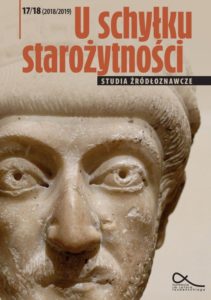The figure of Sethel in the Medinet Madi Manichaean Writings: A result of the influence of the Gnostic Sethianism?
The figure of Sethel in the Medinet Madi Manichaean Writings: A result of the influence of the Gnostic Sethianism?
Observations on Manichaeism as a religious system
Author(s): Mariusz DobkowskiSubject(s): Theoretical Linguistics, Applied Linguistics, Ancient World, Sociology of Religion
Published by: Wydawnictwo Naukowe Sub Lupa
Keywords: Sethel; Seth; Manichaeism; Sethianism; Gnosticism; Medinet Madi discovery; Nag Hammadi discovery
Summary/Abstract: In the Manichaean Coptic Psalm-Book (c. ad 400) we find a hymn (PsB 144.1–146.13)addressed to Sethel/Seth. Hence, a French scholar, André Villey, titled it Hymne àSeth. This is an interesting work, since the biblical figure of Seth is the eponym ofone of the two most important movements of Gnosticism, namely Sethianism. Inmy paper, firstly, I study the characteristics of the figure of Sethel/Seth in theManichaean writings from Medinet Madi; secondly, I examine whether, as forSethel/Seth, we can talk about the influence the Sethians on ‘the religion of Light’or, on the contrary, whether his figure in the Manichaean writings was an original,Manichaean, reinterpretation. Finally, this analysis allows us to draw two importantconclusions regarding Manichaeism as a religious system. The first of them isthat the Manichaeans drew on a broad base of Judaeo-Christian literature, not onlyfrom Gnostic Sethianism. The other is that Manichaeism caused external figuressuch as Seth/Sethel to lose some of their characteristics in the process of beingadapted to the needs of the mentioned religion.
Journal: U schyłku starożytności - Studia źródłoznawcze
- Issue Year: 2019
- Issue No: XVII-XVIII
- Page Range: 39-60
- Page Count: 22
- Language: English

